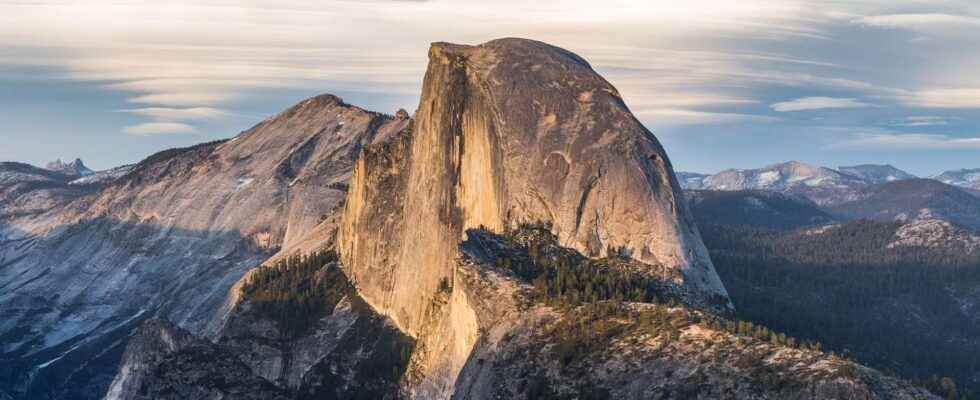The batholiths represent huge granite massifs intrusive in the continental crust. During a magmatic episode produced by the partial fusion at the base of the continental crust, it is rare that all of the magma manages to extricate itself to the surface. A large part is indeed trapped during its ascent and will crystallize in depth in the form of plutons. We use the term batholith when several plutons will eventually merge at the end of a magmatic episode, thus forming a mass very important of granite material. The formation and evolution of batholiths are therefore relatively complex and polyphase.
Gigantic magmatic intrusions
The batholiths are clearly distinguished from the host rocks by a discordant contact. They are thus separated from the surrounding area by a fairly restricted transition zone made up of rocks “annealed” by the magmatic intrusion. This transition zone is marked by a mixture between granite minerals and the minerals of the host rock which is itself transformed by the heat (contact metamorphism).
Batholiths can be several kilometers thick. They are set up at very variable depths, their roof can be located either very close to the surface (600 m for example), or at great depth in the continental crust (6,000 meters). Subsequently, these large granite complexes can reach the outcrop thanks to the erosion of the upper layers. There are thus outcrops of batholith exceeding a hundred kilometers.
A sprawling granite body
Branches can extend in any direction from the main body of a batholith. We then speak of dyke if the intrusion is vertical and sill if it is horizontal. During the formation of a batholith, pockets of host rock can also become trapped. They are referred to as enclaves.
The batholiths of Sierra Nevada, California, British Columbia in Canada, Peru and Chile are the largest known to date, measuring 2,000 km long and 200 km wide. They then form the major part of the mountains to which they belong. In France, the massifs of Huelgoat, Flamanville, Athis and Vire, in the north of Armorican Massif, are batholiths. These are relatively old intrusions, of Hercynian and Cadomian age. Let us also quote Mount Viso in the Alps, or Corso-Sardinian block.
You will also be interested
[EN VIDÉO] Extreme planet: the mountain viscache and its amazing dance In this new excerpt from the film Peru, Planète Extrême produced by French Connection Films, the team sets out to meet the viscache, a surprising rodent living in altitude. Here it is in video evolving in its natural environment.
Interested in what you just read?
.
fs12
